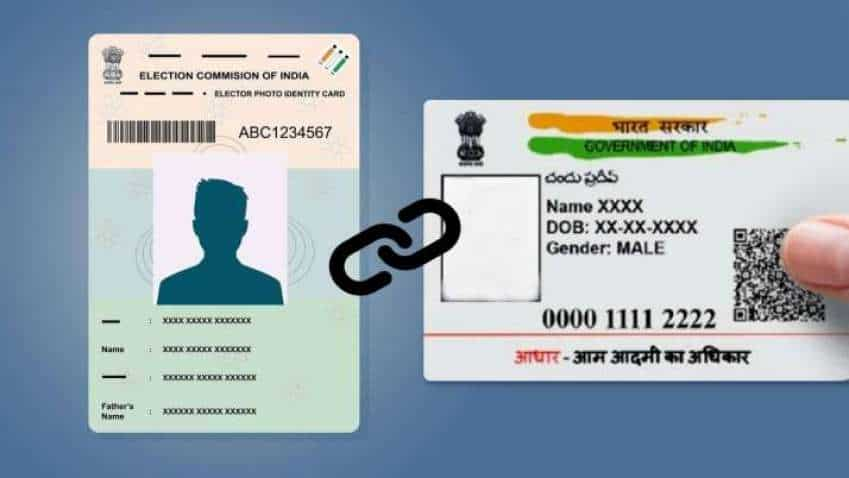The Indian government has proposed tying the voter list to the Aadhaar unique identification number in an effort to improve the integrity of the electoral process. In order to ensure fair and transparent elections, this project aims to increase identification verification and eradicate fraudulent and duplicate voter registrations. The merits, drawbacks, and prospective effects of the Aadhaar-voter list linkage on the Indian election system will all be covered in length in this article.
Understanding voter lists and Aadhaar:
a. Aadhaar: The Unique identifying Authority of India (UIDAI) issues Aadhaar, a 12-digit unique identifying number. It is connected to a person’s biometric data and demographic data and acts as confirmation of their identification and place of residence. Government services including subsidies, banking transactions, and identity verification all frequently use Aadhaar.
a. Voter List: The voter list, sometimes referred to as the electoral roll, is an extensive database of Indian citizens who are legally allowed to vote. It includes the names, addresses, and other pertinent information of those who have voter registrations. Making sure that only qualified persons use their right to vote during elections depends heavily on the voter list.
The idea to connect the voter list and Aadhaar:
By connecting Aadhaar to the voter list, it is hoped to create a reliable system for identification verification during elections. The following are this proposal’s main components:
Each voter’s identity can be uniquely determined by integrating Aadhaar with the voter list, reducing the likelihood of duplicate or fraudulent entries. By ensuring that each person may only cast a single ballot, this reduces the possibility of voter fraud.
b. Simplifying Electoral Rolls: The synchronisation of data made possible by the connectivity between Aadhaar and the voter list makes it simpler to update and maintain correct electoral rolls. It gives authorities the ability to locate and exclude voters, such as those who are deceased or have relocated to another constituency.
c. Address Verification: The connection between Aadhaar and the voter list makes it possible to confirm voter addresses. By preventing voters from being registered in several constituencies, this helps to ensure that people cast their ballots in the places where they actually live.
d. Increased Efficiency: By minimising paperwork and human verification, the connection of Aadhaar with the voter list accelerates the electoral process. It makes voter identification rapid and accurate, which makes polling operations more effective.
The following are some advantages of linking Aadhaar and the voter list: a. Elimination of Duplicate Voters: By identifying and removing duplicate entries, linking Aadhaar and the voter list helps to ensure that each voter has a single, unique identity. By doing so, the potential for election fraud is decreased, and the electoral system’s integrity is strengthened.
b. Improved Accuracy and Transparency: By removing inaccuracies and discrepancies, the integration of Aadhaar with the voter list increases the accuracy of voter information. This openness increases voter confidence in the electoral process and the legitimacy of election results.
c. Optimisation of Cost and Resources: The connection allows for effective management of the voter list, which lowers the cost and effort associated with maintaining and updating the electoral rolls. As a result, resources are better allocated and used for election-related activities.
The Aadhaar-voter list linking streamlines the voter identification procedure, resulting in easier and quicker polling operations. Elections can be run more effectively as a result of the time saved on manual verification.
Concerns and Strategies for Mitigation:
While there are benefits to the idea of linking Aadhaar with the voter list, there are some issues that need to be resolved. Important issues include:
a. Privacy and data security: Protecting personal information and maintaining privacy are two of the main considerations. Establishing strict data privacy policies and making sure that Aadhaar information is exclusively utilised for electoral identification verification are critical.
b. Accessibility and Inclusivity: Particular care must be taken to ensure that the Aadhaar-voter list linkage does not disqualify eligible voters who do not have an Aadhaar card. People who might have trouble accessing or linking their Aadhaar information should be provided with adequate accommodations.
c. Overcoming Technical Obstacles: Aadhaar-voter list linkage deployment requires a strong technological foundation, connectivity, and interoperability. The right steps should be taken to overcome technological issues and guarantee a quick and easy integration procedure.
d. Awareness and Education: Voters should be informed about the advantages and procedures of tying Aadhaar to the voter list through extensive awareness efforts in order to clear up any misunderstandings and guarantee general acceptance. This will assist in allaying any worries or trepidations among the general people.




